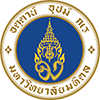This is the first report to identify gene in coconut responsible for curd phenotype. The gene is endosperm specific α-galactosidase. DNA encoding α-galactosidase gene alleles from a normal and two curd coconuts were successfully cloned and characterized. The deduced amino acid of wild type α-galactosidase contains 398 amino acid residues with a 17 N-terminal amino acids signal peptide sequence. Three mutant alleles, the first 19-amino acids from 67 to 85 (ADALVSTGLARLGYQYVNL) deletion with S137R and the second R216T, were identified from curd coconut plant no.1 while the third P250R was identified from curd coconut plant no. 10. Heterologous expression in Komagataella phaffii (Pichia pastoris) indicated that recombinant P250R, R216T and 19-amino acids deletion-S137R mutant proteins showed no α-galactosidase activity. Only the recombinant wild-type protein had α-galactosidase activity. These results are in accordance with the no detection of α-galactosidase activity in developing curd coconut endosperms by tissue staining. While, the accumulation of enzyme activity was present in the solid endosperm of normal coconut. The absence of α-galactosidase activity caused by gene mutations leads to an accumulation of undigested oligogalactomannan in endosperms, resulting in viscous water, thick and fluffy solid endersperm of curd coconut phenotype.

Reference
Phoeurk C, Somana J, Sornwatana T, Udompaisan S, Sirichaiyakul P, Phongsak T, Arthan D. Three novel mutations in α-galactosidase gene involving in galactomannan degradation in endosperm of curd coconut. Phytochemistry 2018, 156: 33-42.
DOI: 10.1016/j.phytochem.2018.08.015
| Relevant SDGs | |
|---|---|
 |
|
| BC investigator | |
 Asst. Prof. Jamorn Somana Asst. Prof. Jamorn Somana |
|
